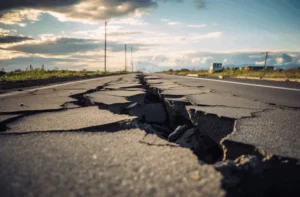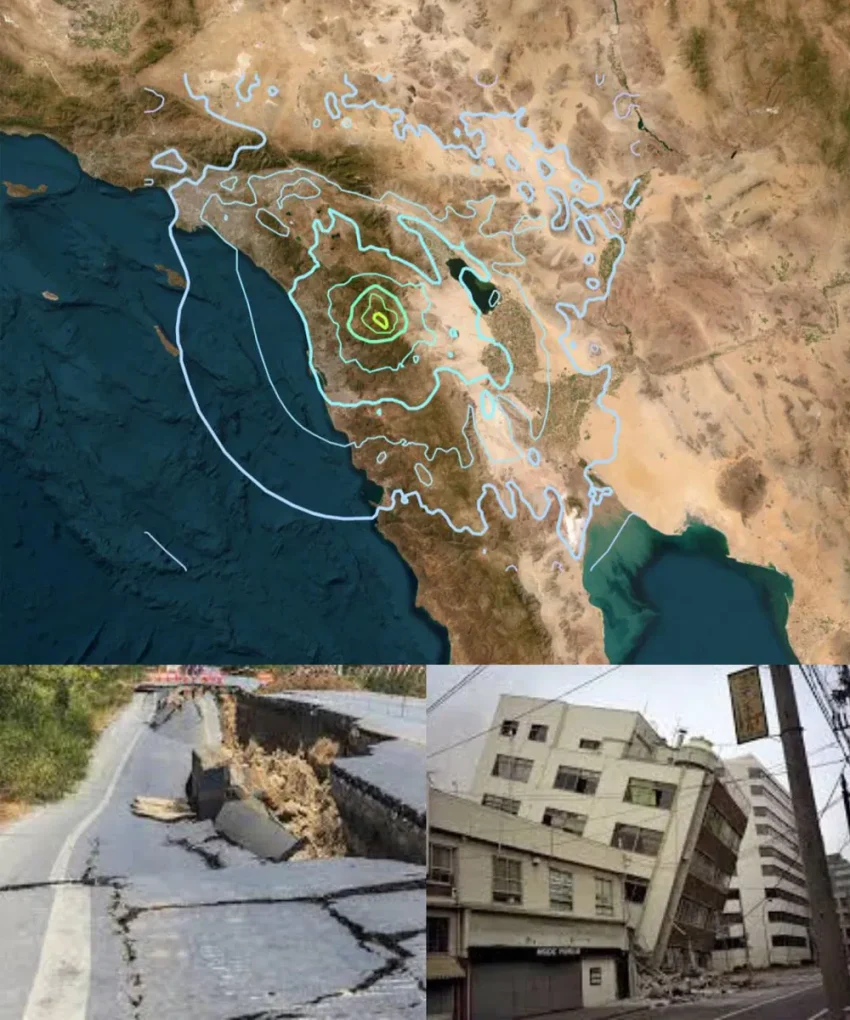A recent magnitude 5.2 earthquake in San Diego has sparked renewed alarm among geologists and locals alike, drawing attention to the Elsinore Fault, a little-known but potentially deadly fault line.
While sometimes overshadowed by its notorious neighbour, the San Andreas Fault, the Elsinore Fault is emerging as a serious seismic concern. This lesser-known fault, which stretches over 100 miles from the US-Mexico border through San Diego and Riverside Counties before going towards Los Angeles, is now in the spotlight following the tremor that struck the region earlier this week.
According to the California Institute of Technology, the Elsinore Fault is one of Southern California’s major fault zones, located just 15 miles from San Diego County. Though it has stayed relatively silent for decades, scientists believe that this quietness may be deceiving.
Dr. Lucy Jones, a well-known seismologist who specialises in California earthquakes, emphasised that the fault is capable of producing a severe quake of up to magnitude 7.8.
“The Elsinore fault is one of the major risks in Southern California,” said Dr. Jones after Monday’s tremor. “The last couple years, we’ve been having more felt-earthquakes than we had for several decades.”
Historically, earthquakes of magnitude 6.0 or more have occurred on the Elsinore Fault every 100 to 200 years, with the most recent large event being in 1910.
In anticipation of such a situation, the US Geological Survey (USGS) has modelled what a large earthquake on the Elsinore Fault may look like, and the results are grim.

The simulation showed widespread structural damage, intense shaking from San Diego to Los Angeles, and millions of people affected throughout Southern California. Cities like Los Angeles, which has over 4 million population, will experience high Modified Mercalli Intensity (MMI) levels ranging from 7.5 to 9.0, threatening building foundations and causing fires, landslides, and power outages.
“The Elsinore is sort of the junior sister to the San Andreas,” Dr. Jones added. “As the San Andreas enters Southern California, it splinters into four major faults — the San Andreas, San Jacinto, Newport-Inglewood, and the Elsinore.”
Though earthquakes are rare along the Elsinore, scientists warn that when they do occur, the impact radius is enormous, stretching into Los Angeles, Las Vegas, Santa Barbara, and even Fresno.
According to a 2017 USGS simulation, a magnitude 7.8 earthquake originating on the Elsinore Fault and extending into the nearby Whittier Fault would cause severe shaking across Los Angeles County, damage to thousands of buildings and bridges, minor to moderate damage in San Diego, light tremors as far as Las Vegas (approximately 300 miles away), and impacts felt by over 23 million people.
While San Diego may suffer moderate damage from MMIs ranging from 4.0 to 6.5, Los Angeles and nearby urban areas may face far more devastating effects, with fatalities, injuries, and financial losses expected to be significant.
Some experts now believe that tectonic stress in Southern California, which was previously suppressed by historic earthquakes such as the 1992 Landers (M7.3) and 1994 Northridge (M6.7) earthquakes, is resuming.
“The 1990s earthquakes depressed local tectonic stress for years,” Dr. Jones claimed. “But we’re starting to see that energy return — much like we did in the 1980s.”
Previous USGS models forecast up to 1,800 fatalities, over 50,000 injuries, billions of dollars in infrastructure damage, and significant disruption of transportation, water, and power networks if a quake of this magnitude strikes along the Elsinore or San Andreas systems.
Scientists are warning Californians to keep prepared as the legacy of prior disasters, such as the 1906 San Francisco earthquake, which killed over 3,000 lives, looms large in California’s seismic history.
Despite its placid character, the Elsinore Fault is now firmly on earthquake scientists’ radar, providing as a reminder that the “Big One” may not strike where many anticipate it to.
“It’s not if, but when,” Dr. Jones emphasised. “And we need to be ready for that when.”
